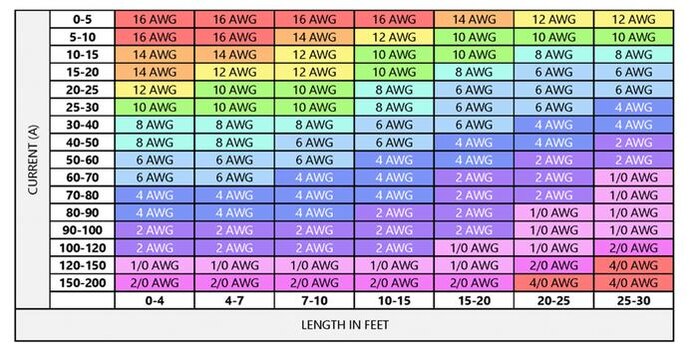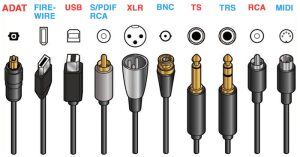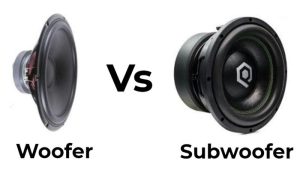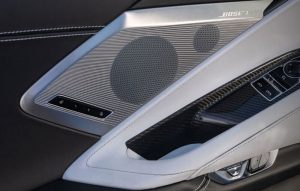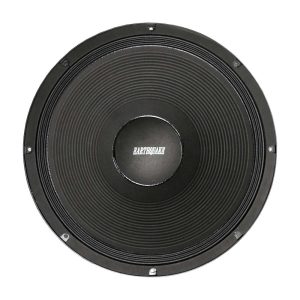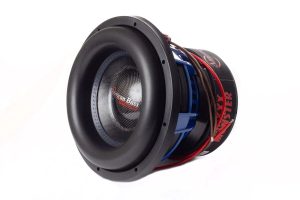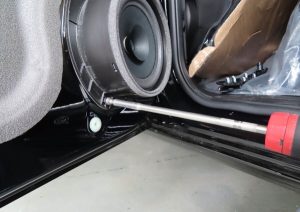Choosing the right wire gauge for a 600-watt amplifier ensures your car audio system performs at its best. The wrong wire size can lead to power loss, overheating, or even damage to your equipment. This guide breaks down everything you need to know about selecting the proper wire gauge for your 600-watt amp, including key factors like current draw, wire length, and safety considerations. Let’s dive into the details to help you make an informed decision for your car audio setup.
Contents
- Why Wire Gauge Matters for Your 600-Watt Amp
- Calculating the Current Draw for a 600-Watt Amp
- Choosing the Right Wire Gauge Based on Current and Length
- Types of Wire for Car Audio Amplifiers
- Grounding Wire: Matching the Power Wire
- Fuse Size for a 600-Watt Amp
- Additional Considerations for Your Car Audio Setup
- Common Mistakes to Avoid
- Tools and Materials Needed for Installation
- Step-by-Step Guide to Wiring a 600-Watt Amp
- Why Proper Wiring Boosts Audio Performance
- FAQs About Wiring a 600-Watt Amp
- Conclusion
Why Wire Gauge Matters for Your 600-Watt Amp
Wire gauge refers to the thickness of the electrical wire, measured using the American Wire Gauge (AWG) system. A lower AWG number indicates a thicker wire capable of carrying more current. For a 600-watt amplifier, the wire gauge directly impacts how efficiently power flows from your car’s battery to the amp.
Using a wire that’s too thin creates resistance, which reduces power delivery and causes the amp to work harder. This inefficiency can lead to distorted sound, overheating, or even a fried amplifier. On the other hand, a properly sized wire ensures stable power flow, maximizes audio performance, and protects your system. Understanding the relationship between wattage, current, and wire size is the first step to getting it right.
Calculating the Current Draw for a 600-Watt Amp
To pick the correct wire gauge, you need to know how much current (measured in amps) your 600-watt amplifier draws. The current draw depends on the amp’s power rating and the voltage of your car’s electrical system, typically 12 volts in most vehicles.
Use this simple formula to calculate current:
Current (I) = Power (P) ÷ Voltage (V)
For a 600-watt amp operating at 12 volts:
I = 600 ÷ 12 = 50 amps
However, amplifiers are not 100% efficient. Most Class D amplifiers, common in car audio, operate at 80-90% efficiency. To account for this, divide the wattage by both the voltage and the efficiency rating. Assuming 85% efficiency:
I = 600 ÷ (12 × 0.85) = 600 ÷ 10.2 ≈ 58.82 amps
This means your 600-watt amp draws roughly 59 amps under normal conditions. For safety, round up and plan for a slightly higher current to handle peak loads, bringing the estimate to about 60-65 amps.
Choosing the Right Wire Gauge Based on Current and Length
Once you know the current draw, select a wire gauge that can safely handle the load. The wire must also account for the distance between the battery and the amplifier, as longer runs increase resistance and require thicker wires. Below is a breakdown of wire gauges suitable for a 600-watt amp based on current and length.
Wire Gauge Recommendations
- 4 AWG: Suitable for runs up to 7-10 feet with a current draw of 60-65 amps. This is a common choice for most car audio setups with a 600-watt amp.
- 2 AWG: Ideal for longer runs (10-15 feet) or if you want extra headroom for safety and future upgrades.
- 1/0 AWG: Best for very long runs (over 15 feet) or high-performance systems with multiple amps.
For a typical car audio installation, where the amp is 5-10 feet from the battery, a 4 AWG wire works well for a 600-watt amp. If your setup involves longer distances or additional components, consider stepping up to a 2 AWG or even 1/0 AWG wire to maintain efficiency.
Wire Length and Voltage Drop
Longer wire runs increase resistance, which can cause a voltage drop. A significant voltage drop reduces the power reaching your amp, leading to poor performance. To minimize this, keep wire runs as short as possible and use a gauge that supports the current over the entire length.
For example, a 4 AWG wire carrying 60 amps over 10 feet typically experiences a voltage drop of less than 3%, which is acceptable for most car audio systems. If the run exceeds 10 feet, a 2 AWG wire reduces the voltage drop and ensures consistent power delivery.
Types of Wire for Car Audio Amplifiers
Not all wires are created equal. For a 600-watt amp, choose high-quality, oxygen-free copper (OFC) wire. OFC wire conducts electricity better than copper-clad aluminum (CCA) wire, which is cheaper but less efficient. Here’s a quick comparison:
- Oxygen-Free Copper (OFC): Offers superior conductivity and durability. It handles high current loads without overheating, making it the best choice for a 600-watt amp.
- Copper-Clad Aluminum (CCA): Lighter and less expensive but requires a thicker gauge to carry the same current as OFC. For a 600-watt amp, you might need a 2 AWG CCA wire to match the performance of a 4 AWG OFC wire.
Investing in OFC wire ensures long-term reliability and optimal performance for your car audio system.
Grounding Wire: Matching the Power Wire
The grounding wire is just as important as the power wire. A poor ground connection can cause noise, distortion, or even damage to your amp. Use the same gauge for the ground wire as the power wire (e.g., 4 AWG for both). Keep the ground wire short and connect it to a clean, unpainted metal surface on the car’s chassis.
Avoid grounding the amp to the battery’s negative terminal, as this creates a long ground loop that can introduce noise. Instead, find a nearby grounding point, such as a factory bolt or a dedicated grounding block, to ensure a solid connection.
Fuse Size for a 600-Watt Amp
A fuse protects your system by preventing excessive current from damaging the amp or causing a fire. To determine the correct fuse size, use the current draw calculated earlier (60-65 amps). Choose a fuse rated slightly higher than the current draw, typically 70-80 amps for a 600-watt amp.
Place the fuse as close to the battery as possible, ideally within 12-18 inches of the positive terminal. This minimizes the risk of a short circuit in the power wire. Use a high-quality fuse holder and ensure the fuse matches the wire’s ampacity to maintain safety.
Additional Considerations for Your Car Audio Setup
Beyond wire gauge, several factors influence the performance and safety of your 600-watt amp installation. Pay attention to these details to get the most out of your system.
1. Battery and Alternator Capacity
A 600-watt amp draws significant power, which can strain your car’s electrical system. Ensure your battery and alternator can handle the additional load. A high-output alternator (rated 100+ amps) and a deep-cycle battery designed for car audio provide固定
2. Quality of Installation Accessories
Invest in high-quality installation accessories, such as ring terminals, heat-shrink tubing, and wire looms. These ensure secure connections and protect the wiring from wear and tear. Poorly installed components can lead to loose connections, which cause resistance and heat buildup.
3. Capacitor or Second Battery
For high-power systems, a capacitor or second battery can stabilize voltage and reduce strain on the primary battery. A 1-2 farad capacitor works well for a 600-watt amp, providing quick bursts of power during bass-heavy music.
4. Heat Management
Amplifiers generate heat, especially when driving subwoofers. Mount the amp in a well-ventilated area, away from direct sunlight or engine heat. Use a cooling fan if necessary to prevent overheating, which can degrade performance or damage the amp.
5. Upgrading Your System
If you plan to add more amplifiers or upgrade to a higher-wattage system, choose a wire gauge with some headroom. For example, a 2 AWG wire allows you to upgrade to a 1000-watt amp without rewiring the system.
Common Mistakes to Avoid
Even experienced installers can make errors when wiring a 600-watt amp. Steer clear of these pitfalls to ensure a safe and reliable setup.
- Using Undersized Wire: A wire that’s too thin overheats and reduces performance. Stick to at least 4 AWG for a 600-watt amp.
- Skipping the Fuse: Never install an amp without a properly sized fuse. It’s a critical safety component.
- Poor Grounding: A weak ground connection causes noise and instability. Use a short, same-gauge ground wire and a solid chassis connection.
- Ignoring Voltage Drop: Long wire runs without proper gauge increase resistance. Measure the distance and choose the right wire size.
- Mixing Wire Types: Combining OFC and CCA wires can lead to inconsistent performance. Stick to one type, preferably OFC.
Tools and Materials Needed for Installation
To wire your 600-watt amp correctly, gather these tools and materials:
- 4 AWG or 2 AWG OFC power and ground wire
- 70-80 amp fuse and fuse holder
- Ring terminals and crimping tool
- Wire cutters/strippers
- Heat-shrink tubing
- Screwdrivers and wrenches
- Multimeter (to test voltage and continuity)
- Wire loom or conduit (for protection)
Having the right tools simplifies the installation and ensures a professional result.
Step-by-Step Guide to Wiring a 600-Watt Amp
Follow these steps to wire your 600-watt amp safely and effectively:
- Disconnect the Battery: Remove the negative battery terminal to prevent electrical shock or short circuits.
- Run the Power Wire: Route the 4 AWG power wire from the battery’s positive terminal to the amp’s power input. Avoid sharp edges and hot surfaces.
- Install the Fuse: Connect the fuse holder within 12-18 inches of the battery and insert a 70-80 amp fuse.
- Connect the Ground Wire: Attach a 4 AWG ground wire from the amp’s ground terminal to a nearby chassis point. Scrape away paint for a clean connection.
- Secure the Wiring: Use wire looms and zip ties to organize and protect the wires.
- Test the System: Reconnect the battery and use a multimeter to check voltage at the amp. Ensure it’s close to 12 volts.
- Power On the Amp: Turn on the amp and test the audio output. Adjust gain settings as needed.
Why Proper Wiring Boosts Audio Performance
A well-wired 600-watt amp delivers clean, powerful sound without distortion. Proper wire gauge ensures the amp receives consistent voltage, allowing it to drive speakers or subwoofers effectively. This results in punchy bass, clear mids, and crisp highs, transforming your car into a mobile concert hall.
FAQs About Wiring a 600-Watt Amp
Can I use a 6 AWG wire for a 600-watt amp?
No, a 6 AWG wire is too thin for a 600-watt amp drawing 60-65 amps. Use at least a 4 AWG wire for runs up to 10 feet.
How far can I run a 4 AWG wire?
A 4 AWG wire supports a 600-watt amp for runs up to 10 feet. For longer distances, use a 2 AWG or 1/0 AWG wire.
Do I need a capacitor for a 600-watt amp?
A capacitor is optional but recommended for stabilizing voltage during heavy bass hits. A 1-2 farad capacitor is sufficient.
What happens if I don’t use a fuse?
Without a fuse, a short circuit or overload could damage the amp or start a fire. Always use a 70-80 amp fuse near the battery.
Is CCA wire okay for a 600-watt amp?
CCA wire is less efficient than OFC. If using CCA, choose a thicker gauge (e.g., 2 AWG) to match the performance of a 4 AWG OFC wire.
Conclusion
Selecting the right wire gauge for a 600-watt amp is critical for safety, performance, and longevity. A 4 AWG OFC wire suits most setups with runs up to 10 feet, while 2 AWG or 1/0 AWG wires handle longer distances or future upgrades. Pair the power wire with a matching ground wire, install a 70-80 amp fuse, and use high-quality materials to ensure reliable power delivery. By following this guide, you’ll enjoy powerful, distortion-free sound and protect your car audio system for years to come.
